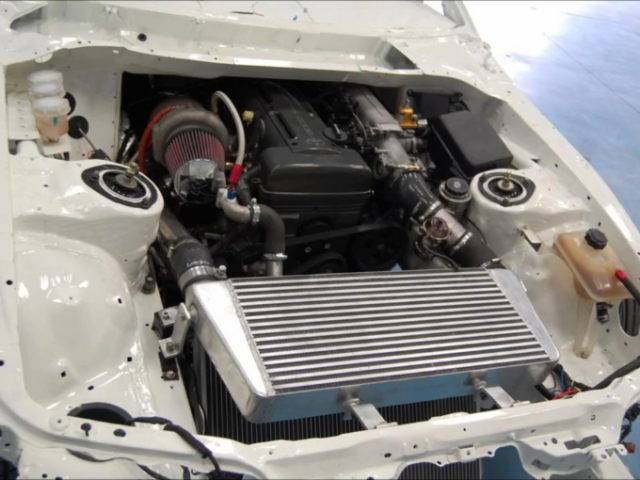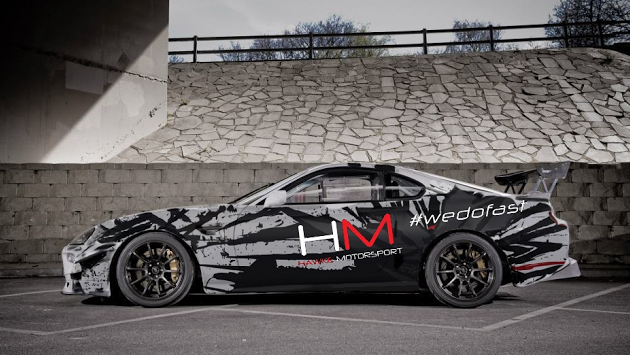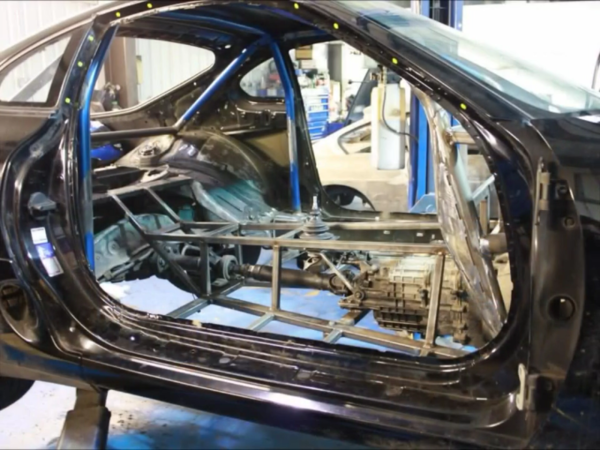While the JZA80 has never been known as a consummate track car, it’s always held potential in the tuner’s eyes, and not just for its power. With the right tweaking it’s been shown to be able to turn a quick lap time, but it’s hard to get away from the effects of the heavy, cast-iron 2JZ motor sitting out in front of the front axle.
With all that weight sitting towards the nose of the car, it makes it quite difficult to transfer weight to the rear and deploy all that power to the pavement, let alone get the nose to turn with any real urgency. Thankfully, someone’s addressed that particular flaw.
Hawke Motorsport addressed that one shortcoming by moving the motor back 12 inches and dropping the mounting level by two inches. This incredible feat was achieved by cutting the stock firewall and floor out and devising a custom frame to mount the V160 transmission, the seats, and just about everything between the B-pillar and front wheel well backwards by a foot.
What this also does is allow the ancillaries to be moved closer to the center of the car. The problem with turbo setups on front-engined cars is that the gubbins tend to hang around the front bumper, and here, the intercooler has been V-mounted, instead of front-mounted. It also allows for a larger area for the intake to be sectioned off, thereby ensuring cooler air that won’t be heated by engine components brushing up against it.
To further lower and center the weight, the roof was cut and a carbon piece inserted in its place. A flat underbody and a massive rear diffuser help suck the car to to the road at speed, but even at low speeds, the car exhibits incredible grip and traction thanks to its weight distribution.
Those familiar with Supras would expect this 600-horsepower, 550-pound-foot monster to spin its tires coming out of the pedestrian chicane leading onto Goodwood’s front straight. Instead, the car simply hooks up like a mid-engined car, and fires off towards the horizon.

With everything compacted towards the center of the car, the layout of this bay is reminiscent of Mazda’s RX-7 – arguably Japan’s best handling car.
Such a small feat might not strike many as that impressive, but that level of traction is something that is seldom seen with these turbo Supras. Even the JGTC Supras of the late 1990s used a four-cylinder, 3SGTE motor for better weight distribution, among other reasons, and they didn’t hook up quite as well. Sure, some of that has to do with tire technology of twenty years ago, but the fact of the matter was that the monstrous 2JZ hampered rotation and traction.
Now, with the motor in its ideal location, the Supra and its 2JZ show just how capable the package is – with great turn in, wonderful traction, and as always, great high-speed stability. Perhaps Toyota should’ve tried something along these lines when packaging the original production car, but then again, it would’ve spoiled the grand touring aspect. After all, with the seats as they are now, only contortionists would be able to squeeze in the back.





















